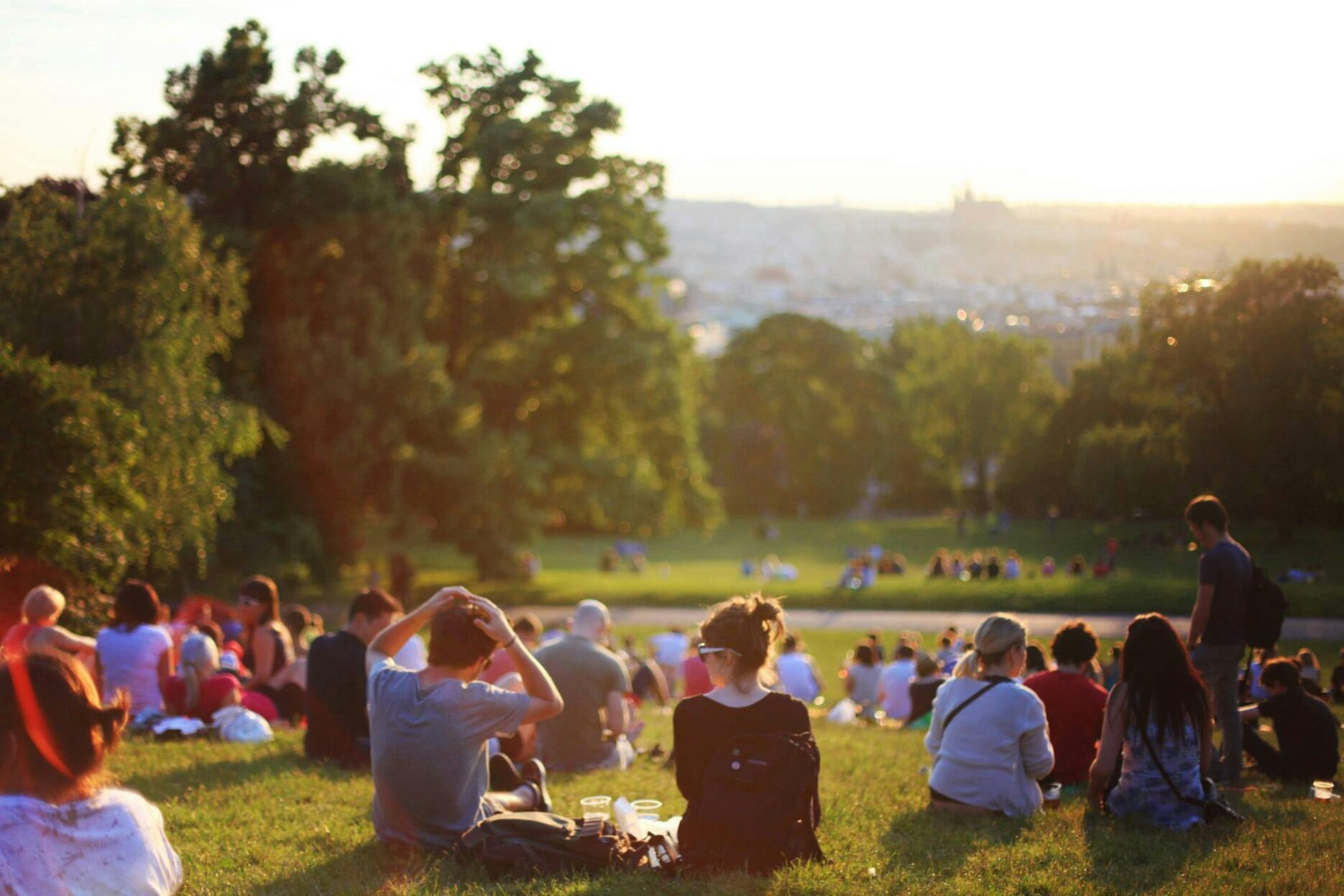Key takeaways:
- The “twenty minutes in the park” theory is trending on social media platforms such as Xiaohongshu (RED).
- As more and more young people flock to parks, brands are following suit to find new marketing opportunities.
- When consumers feel relaxed, a natural product placement is more likely to receive positive feedback.
A new way to unwind is becoming popular among young people: office workers are choosing to spend time in parks during their breaks, even if it’s just to look at the flowers and listen to the birds, to relieve their emotions and quickly recharge their batteries. This way of self-relaxation is known as the “20-minute park effect” on social platforms. This theory is supported by a psychological research article published five years ago: “Stressed? Take a 20-minute nature pill”.
Following the trend among young people, brands have also started to organise events in parks in an attempt to convey their brand concepts and create emotional resonance with users through green activities.
Hanging out in the park matters a lot
Using Xiaohongshu as an example, the topic #twenty minutes in the park# has been highly discussed since this year, with a total of 420K notes as of mid-May. According to data from Qiangua, the topic had 55.94 million views in April. More than half of the users participating in the topic are under 24 years old, and more than 95% are under 34 years old. Young people who are overwhelmed by reality and can’t catch their breath find spiritual healing in the park.
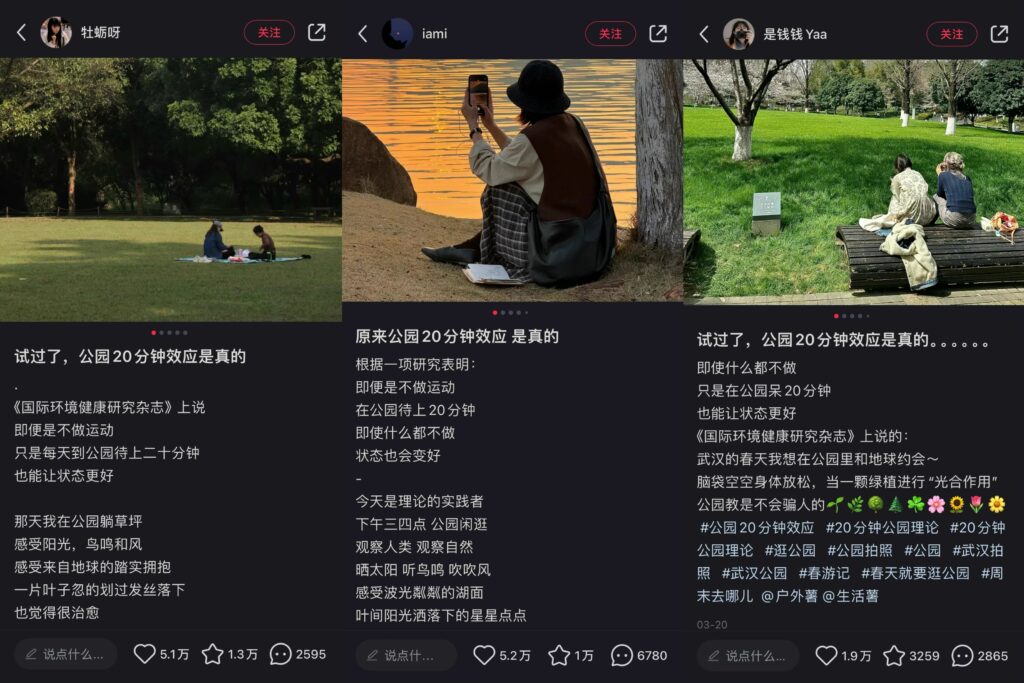
From city walks to temple tours to today’s parks, although the forms are different, they all reflect young people’s desire to “escape from reality”. Parks provide a free space to relax, and at the same time, are short distances and inexpensive, attracting young people to visit and share a lifestyle they enjoy with little effort.
From 22 March to 22 April, Xiaohongshu partnered with Nanjing’s Xuanwu Lake Park to launch the “Hanging out in the park matters a lot” (逛公园才是正经事) campaign, inviting Nanjing residents to spend time in the park. Xiaohongshu planned a series of themed activities based on park-related topics on the platform, including photography, pets, couples, parents and children. Xiaohongshu also joined hands with 50 small shops and dozens of business districts in Nanjing to promote the campaign, sending out 10K picnic mats to inspire people to get equipped for a stroll in the park. Additionally, Xiaohongshu planned a series of pop-up events, such as the “Park Concert” and “20 Minutes to Let Go”, to prompt the public to learn about and experience fresher ways to enjoy the park.
Such activities reflect Xiaohongshu’s deep insight into young people’s need for emotional healing
The Xiaohongshu hashtag #Hanging out in the park matters a lot# received a total of 5.07 million reads and 227.4K interactions throughout the campaign period. Such activities reflect Xiaohongshu’s deep insight into young people’s need for emotional healing, and by making the park a place for deep connection and social interaction, users feel the healing power of the park during the activities, injecting a wave of vitality and hope into Nanjing’s urban life.
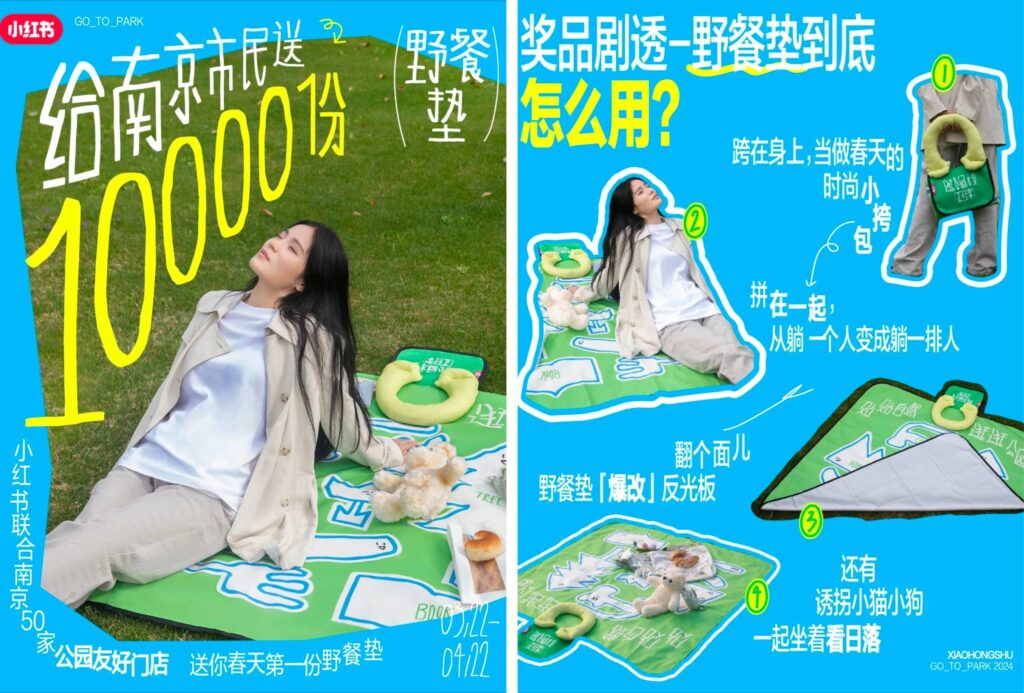
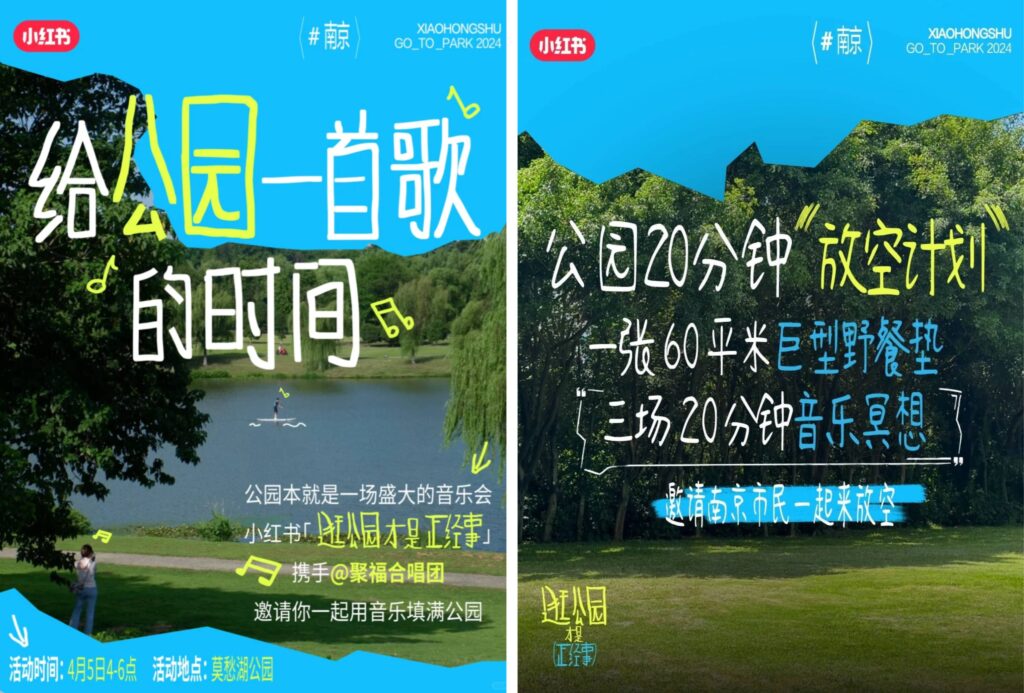
Sports, camping and more
As more and more young people flock to parks, brands are following suit to find new opportunities for marketing. Data from Qiangua shows that the top three brands in terms of the number of commercial recommendation notes participating in the Xiaohongshu topic #20 minutes in the park# in April were CHAGEE (beverage brand), Molsion (sunglasses brand) and Trumpchi (automaker brand). Brands are forming connections with users under the topic through engaging copywriting, thus bringing them closer to young people.
Brands are forming connections with young people through engaging copywriting and offline activities
In addition to online marketing, many brands are launching offline activities in parks to interact more directly with users. For example, Aldi held a spring camping event at Shanghai’s Chenshan Botanical Garden, using fun inflatable sofas and other peripheral products to motivate users to visit the park. Sports brand Keep also launched a special road running event in March this year, which started at Guangzhou’s Haizhu Lake Park. In order for participants to feel the vitality and energy of nature while running in the park, the on-site installation featured green as the main colour, integrating creative green elements and environmental protection concepts, as well as interesting signage to enhance runners’ interest in interacting with each other.
In addition to sports and camping, mart brand plant b’s “Urban Forest Project” was held in mid-April this year at the Great Lawn of Hangzhou Botanical Garden’s Botanical Area, inviting more than 100 brands to participate. The event consisted of fashion and sports, natural sustainability, non-genetic inheritance, Chinese health care and outdoor sports. Additionally, there were art installations, interactive games, pop-up performances and forest science knowledge dispersed throughout the venue, providing consumers with a rich and diverse experience.

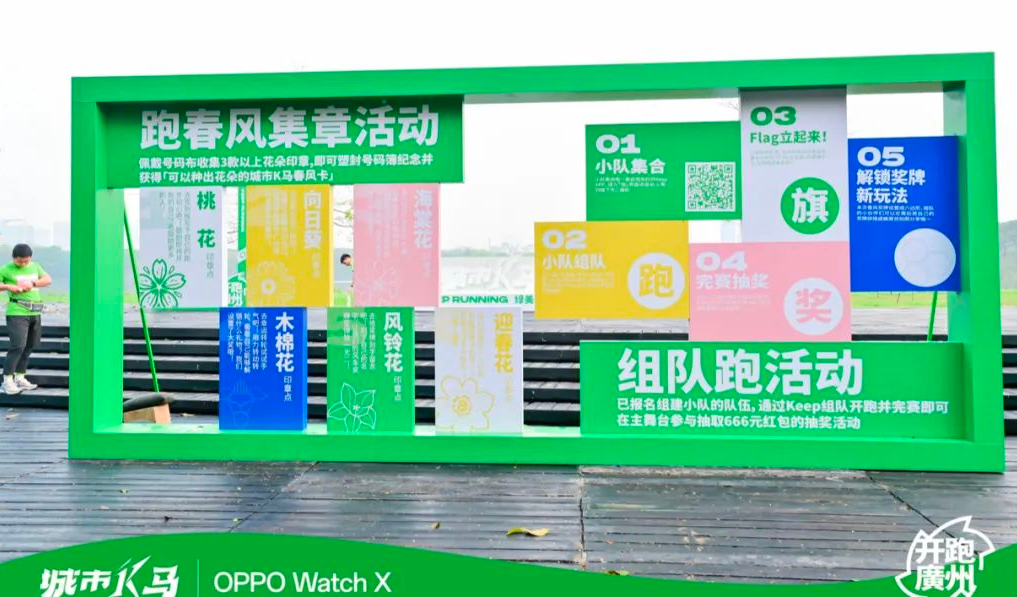
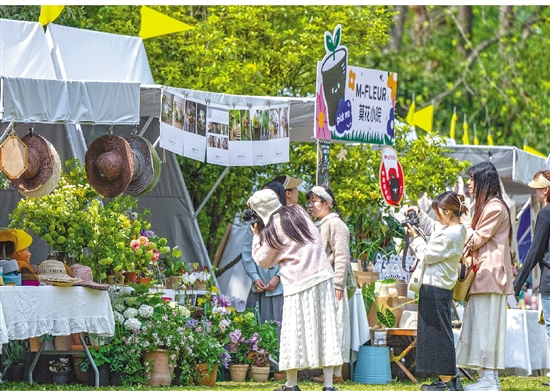
Consumption potential in nature
Contemporary consumers, especially young people, are increasingly concerned about emotional value. They are willing to take over 10K steps a day for city walks as well as squeeze out 20 minutes of fragmented time to heal themselves in their busy lives, and this kind of low-cost pleasure has become a healthy trend. At the same time, users are shifting from material consumption to spiritual consumption, and young people are beginning to prefer products and services that offer unique experiences and demonstrate their personal tastes and attitudes towards life.
Under this trend, brands are attracting people by creating short and quick events in parks. Or they provide convenient “escape spaces” close to consumers’ daily lives, thus enriching the user experience and strengthening the emotional connection between the brand and the user.
A natural product placements more likely to get positive feedback
In many cases, purchases are based on emotional judgement, especially when consumers are feeling relaxed, and a natural product placement is more likely to receive positive feedback. Through running, camping, entertainment and other highly participatory activities, brands use the natural environment to awaken users’ dopamine and carve a beautiful slice of life with them. In this happy state, the brand then conducts marketing stimulation to achieve sales conversion.
Behind “20 minutes in the park” is a change in people’s attitude towards life and their desire for a moment’s rest. Brands should pay more attention to the value of urban public spaces and the marketing potential of the “third space” in addition to work and life.




